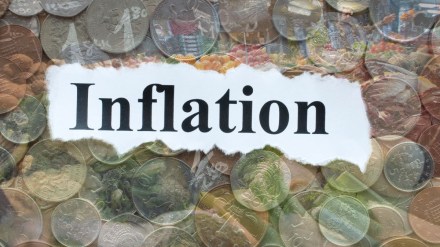India’s retail inflation, as measured by consumer price index (CPI), inched up to 2.07% in August from a revised 1.61% in July as some food prices turned costlier and made the deflation in the segment less deep.
July 2025 was the ninth straight month when both the overall CPI and Consumer Food Price Index (CFPI) declined.
The August print was still the lowest since January 2019 (1.97%), excepting for the July figure, and was well within the Reserve Bank of India’s tolerance band. Retail inflation had stood at 3.65% in August 2024.
Why analysts are forecasting further rate cuts
With this, and the expected deflationary impact of the Goods and Services Tax (GST) reductions on hundreds of items, many analysts feel that there is room for further rate cuts in the current financial year – by 25 or even 50 bps.
“An increase in headline inflation and food inflation during the month of August, 2025 is mainly attributed to increase in inflation of vegetables, meat and fish, oil and fats, personal care and effects and eggs,” the National Statistics Office said.
The latest headline figure was in line with expectations, and underscored the notion that average rate for FY26 will undershoot the RBI’s projection of 3.1%. The RBI expects the inflation to inch up to 4.4% by year-end, and rise further to 4.9% in the first quarter of the next financial year.
Upasna Bhardwaj, economist at Kotak Mahindra Bank, said: “While we see a pause by the RBI in the upcoming policy, we do see some scope for rate cuts worth 25-50 basis points opening up from December policy if downside risks to growth materialise and the Fed moves ahead with aggressive rate cuts.”
Madhavi Arora, chief economist, Emkay Global said that the continued spate of inflation undershoot versus RBI’s estimates would ensure FY26 inflation will likely undershoot RBI’s estimates by at least 50bps.
Core inflation, which excludes volatile items such as food and energy and is a closer indicator of demand in the economy, came in at 4.13% in August, versus 4.16% in the previous month, and 3.38% in August 2024.
Factors driving inflation and future outlook
Apart from the GST cuts, weaker growth due to the 50% extra tariffs imposed by the US on Indian goods also could keep companies’ pricing power in check, analysts feel. The downward pressure on the index on account of GST cuts is estimated to be 60-100 bps by various analysts on an annual basis assuming full pass-through.
Icra chief economist Aditi Nayar said the sequential uptick in year-on-year CPI inflation in August 2025 was largely driven by the “food and beverage” segment, which was flat compared to the year-ago levels, after witnessing a deflation in each of the last two months. While robust kharif sowing augurs well for the food inflation trajectory, excess rains and flooding in some parts of the country are risk factors and might impact crop yield.
The inflation in rural India increased to 1.69% in August from 1.18% in July. Urban inflation inched up sequentially from 2.1% to 2.47%. Among states, the highest inflation was in Kerala at 9.04% and the lowest in Assam (-0.66%).
Inflation in fuel and light segment decline from 2.67% in July to 2.43% in August. Clothing and footwear also saw lower price pressure in August (2.33%) compared with July (2.5%).
Inflation in vegetables came in at (-)15.92% in August compared with (-)20.69% in July. Fruit inflation also came down from 14.42% in July to 11.65% in August.
“Prsistently high double-digit inflation in edible oils warrants close monitoring, given weak sowing trends, import dependence, and elevated global edible oil prices, ” chief economist at CareEdge Ratings Rajani Sinha said.
With lower than expected food inflation and expected easing of core inflation in the coming months due to reduction in the GST, Crisil has revised its inflation forecast down to 3.2% from 3.5%. “This adjustment allows for potential changes in monetary policy and another 25 basis repo rate cut is expected later this fiscal,” chief economist Crisil Dharmakirti Joshi said.
